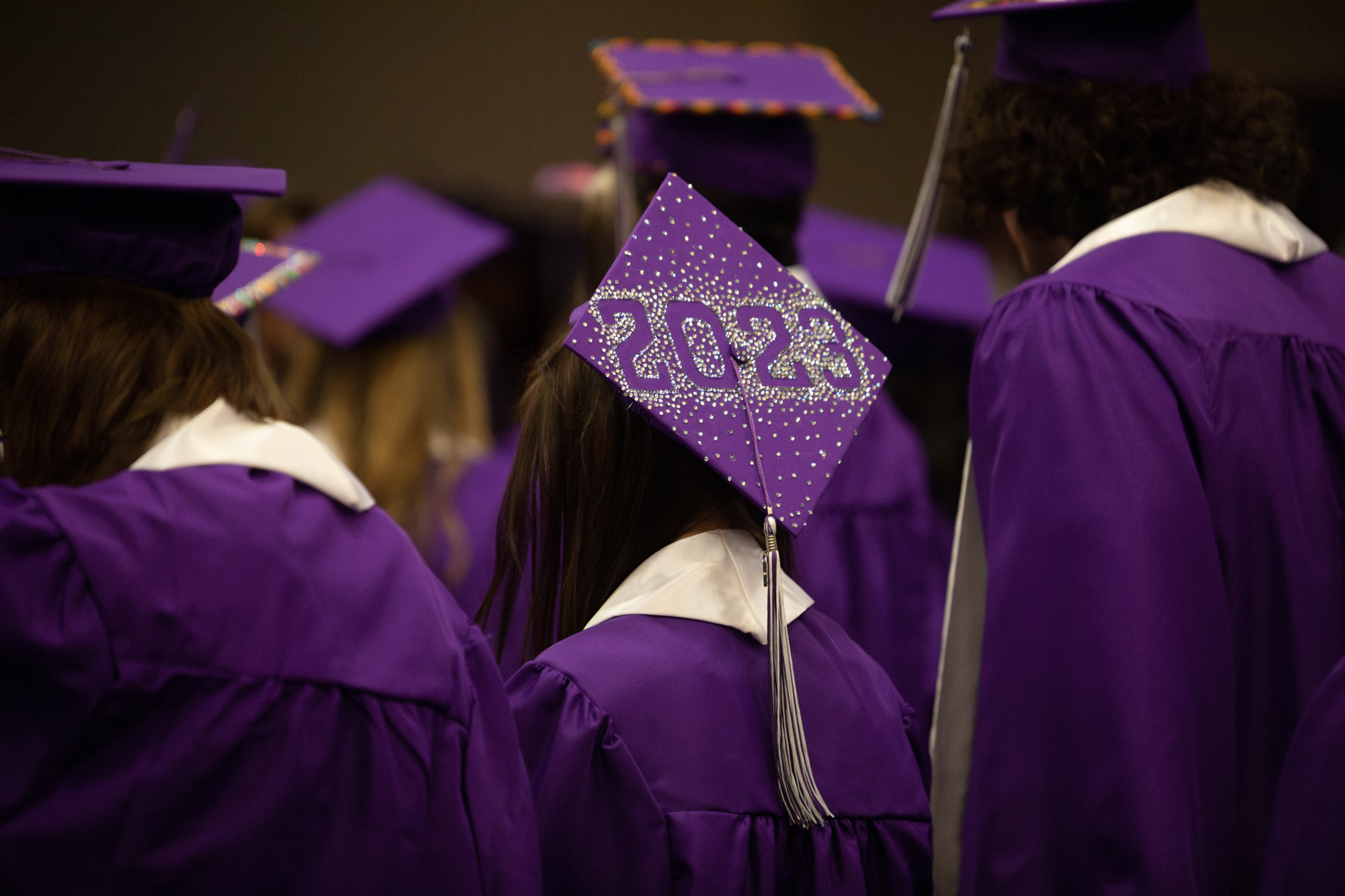Nevada’s 2023 graduation rate lags pre-COVID levels. Here’s how districts want to fix it.

Although Nevada’s graduation rate has remained fairly steady for the past two years — at about 81 percent — State Superintendent of Public Education Jhone Ebert said she is optimistic that a historic infusion of funds from the Legislature this year will help districts get their numbers back to levels not seen since before COVID-19 pandemic.
More than 31,000 Nevada students, or 81.4 percent, graduated in 2023, a slight dip from 2022’s rate of 81.7 percent.
The graduation rate for the state’s largest school district, Clark County, was in line with the state’s, about 81 percent, a slight increase from last year. Thirteen of the state’s 17 school districts had rates higher than the state level, as did the State Public Charter School Authority, and nine school districts had graduation rates higher than 90 percent.
Ebert noted in a Dec. 1 press release that 2023 graduates’ high school experience was affected by the COVID-19 pandemic, which began when they were freshmen and triggered school shutdowns starting in March 2020.
Even after some schools reopened, others opted for hybrid classes, with some students learning in person while others worked at home. In-person classes didn’t resume for all students at the Clark County School District until the 2021-22 school year.
“To me, the stable (rate) shows how hard our educators and everyone was working to make sure that they have continuity of learning,” Ebert said. “That being said, when you look into the future, I think we're going to … see an increase.”
Ebert said she’s optimistic that the historic levels of K-12 education funding approved during the 2023 legislative session — an additional $2.6 billion over the past biennium — will help the state get back to its pre-pandemic graduation rate and beyond. Spending is targeted toward students learning English as a second language and early childhood literacy, among others.
“We're investing in our earliest learners, so that they're not playing catch up when they're in high school, but they actually have a strong start to high school graduation,” Ebert said.
The Elko County School District is already seeing progress. Its graduation rate rose from about 80 percent in 2022 to more than 83 percent this year.
Ray Smith, the district’s director of school improvement, credits the increase to a strategic plan that focused on preparing students for their future after high school whether they decide to pursue post-secondary education or enter the workforce. The district has bolstered its career and technical education (CTE) opportunities, allowing students to explore career fields, as part of its effort to improve graduation rates. Smith said the district’s most popular CTE program is agriculture.
“There’s a lot of research out there that shows kids who are tied into a CTE pathway do graduate at higher rates than kids who are not,” Smith said, adding there is a concerted effort by the district to offer a variety of opportunities to provide students with “career skills that are something that they're passionate about.”
In addition, Smith said the district began including students with special needs and those learning English as a second language into their general education classrooms as much as possible before the pandemic so they were exposed to the content that other students at their grade level were receiving.
“I think that's really starting to take root and have an impact on those grad rates as well,” Smith said.
Washoe County School District (WCSD) and the State Public Charter School Authority, Nevada’s second- and third-largest public school systems, saw decreases in their year-over-year graduation rates.
Washoe’s rate dropped from about 84 percent in 2022 to 81 percent this year. It’s also lower than its 2019 rate: 86 percent.
District officials attribute most of the decrease in the past year to adjustments that the Nevada Department of Education made to the way the adjusted cohort graduation rate is calculated. The rate is the percentage of students who graduate in a specific period with a regular high school diploma.
One of the changes included graduates from a district-sponsored charter school into the district’s rate. Another change excluded graduates who receive diplomas after going through an alternative education program such as the district’s RISE Academy for Adult Achievement. The second change is in line with a federal regulation.
However, Brenda Chavez, a program analyst with the district, said although those students don’t positively affect the district’s graduation rate, students who drop out, earn a high school equivalency certificate or do not obtain an adult diploma from RISE are still part of the denominator used in the calculation as part of the number of possible graduates. Chavez said every year, about 200 students enter RISE Academy.
Ebert said it was unclear if these changes negatively affected other school districts’ graduation rates.
In addition to these changes, Troy Parks, the district’s chief academic officer, said Washoe schools are struggling with chronic student absenteeism, an issue that was exacerbated across the nation after the pandemic.
“We have many methods to help them recover credits and catch them up, but the most effective way students learn is when they're right there with their classmates in front of their teacher,” Parks said.
Work remains
This year’s graduation rates across the state still remain lower than the rates prior to the pandemic. Elko County’s graduation rate for the 2017-2018 school year, the last full school year before the pandemic, was nearly 92 percent, about 9 percentage points lower than this year’s rate.
Similarly, the state’s 2023 graduation rate, 81 percent, lags behind its rate for the 2018-19 school year, which was about 84 percent.
Parks said Washoe County School District principals are now monitoring students’ progress throughout their time in high school as opposed to only monitoring them during their senior year to make sure they are ready for graduation. The district also sends its associate chiefs, who supervise principals, to school sites three times a week so they can support principals and teachers to become better instructional leaders.
“We put a lot of emphasis in making sure our principals are in classrooms, providing teachers feedback on instruction, and really trying to improve our teaching and learning practices,” he said.
Smith said the Elko County School District has been using a portion of its federal COVID-19 relief funds that schools received throughout the pandemic to address learning loss. Since last year, the district spent nearly $350,000 to provide its students with Paper, an online tutoring service that’s available 24/7.
Smith said officials are hopeful the district can find another way to pay for the service after its COVID relief funds run out.
He said the service has been a hit with students, who are using it while they are in school as well as outside school hours.
“Our teachers and our students have really embraced it,” Smith said. “Our usage is really, really high.”
